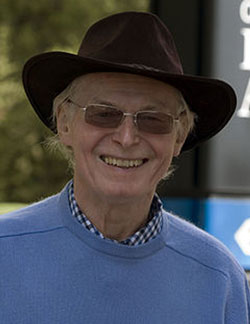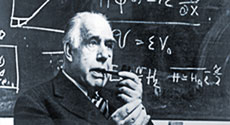Niels Bohr Lecture by Alan Watson
The Highest Energy Particles in Nature

Niels Bohr Lecture by Alan Watson: The Highest Energy Particles in Nature
Abstract: About every 10 seconds, the earth’s atmosphere is hit by a cosmic ray of ~1020eV, the energy of a well-struck tennis ball. Where and how these extraordinarily-rare particles attain such energies is one of the mysteries of high-energy astrophysics.
In an effort to solve these problems a detector covering 3000 km2, the Pierre Auger Observatory, has been built in Argentina to measure the properties of these particles with unprecedented precision, with a smaller one now operating in the United States.
In my talk I will explain how we detect such rare cosmic rays and review some of the results. Lack of knowledge of features of particle physics at energies beyond those attained at the LHC is a serious handicap to interpretation of the data but, despite this, some important astrophysical inferences can be drawn. Plans for future detectors will be briefly mentioned.
Wednesday, September 14, 2016 at 15:15 in Aud. 3 at HCØ.
About the speaker: Alan Watson is an experimental physicist who has studied cosmic rays for over 50 years at field stations in the UK, Antarctica, Arizona and Argentina, with the goal of discovering the origin of the highest-energy particles. In 1991, with Jim Cronin (University of Chicago), he conceived the idea of the Pierre Auger Observatory, a cosmic ray detector that covers 3000 km2 in Western Argentina and which has been operational since 2004. With it, the best data on the highest-energy cosmic-rays have been obtained.
Watson studied at the University of Edinburgh, doing his PhD on the condensation of water vapour, before moving to a faculty position at the University of Leeds in 1964 where he took up research on cosmic rays. Alan Watson is an Emeritus Professor of Physics at the University of Leeds (since 2003), Emeritus Spokesperson of the Pierre Auger Observatory (since 2007) and a Fellow of the Royal Society (elected 2000).
|
Coffee and Cookies
Coffee, tea and cookies will be served outside the auditorium 15 minutes before the lecture.

 Niels Bohr Lectures
Niels Bohr Lectures